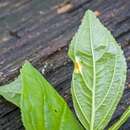en
names in breadcrumbs


Puccinia is a genus of rust fungus that causes rust diseases on most major crop cereals, except rice. It is considered the most destructive of the rust fungi genera and has been a significant agricultural pathogen for thousands of years, able to incite serious epidemics.
The common name of rust fungi refers to the appearance of infected plants, which develop numerous small, red-orange lesions on leaves and stems, as if they are rusting. These lesions contain up to 350,000 spores. The life cycle of Puccinia fungi is complex, involving five different spore types.
Puccinia is a genus of fungi. All species in this genus are obligate plant pathogens and are known as rusts.[1] The genus contains about 4000 species.[2]
The genus name of Puccinia is in honour of Tommaso Puccini (died 1735), who was an Italian doctor and botanist who taught Anatomy at Hospital of Santa Maria Nuova in Florence.[3]
The genus was circumscribed by Pier Antonio Micheli in Nov. Pl. Gen. on page 213 in 1729.
Examples of Puccinia rusts and the diseases they cause:
The rust species Puccinia obtegens has shown some promise for controlling Canada thistle, but it must be used in conjunction with other control measures to be effective.[5]
Another leaf rust species, Puccinia myrsiphylli, has been used as an effective biocontrol agent for infestations of the common form of bridal creeper (Asparagus asparagoides) in Australia since 2000.[6]
Puccinia is a genus of fungi. All species in this genus are obligate plant pathogens and are known as rusts. The genus contains about 4000 species.
The genus name of Puccinia is in honour of Tommaso Puccini (died 1735), who was an Italian doctor and botanist who taught Anatomy at Hospital of Santa Maria Nuova in Florence.
The genus was circumscribed by Pier Antonio Micheli in Nov. Pl. Gen. on page 213 in 1729.